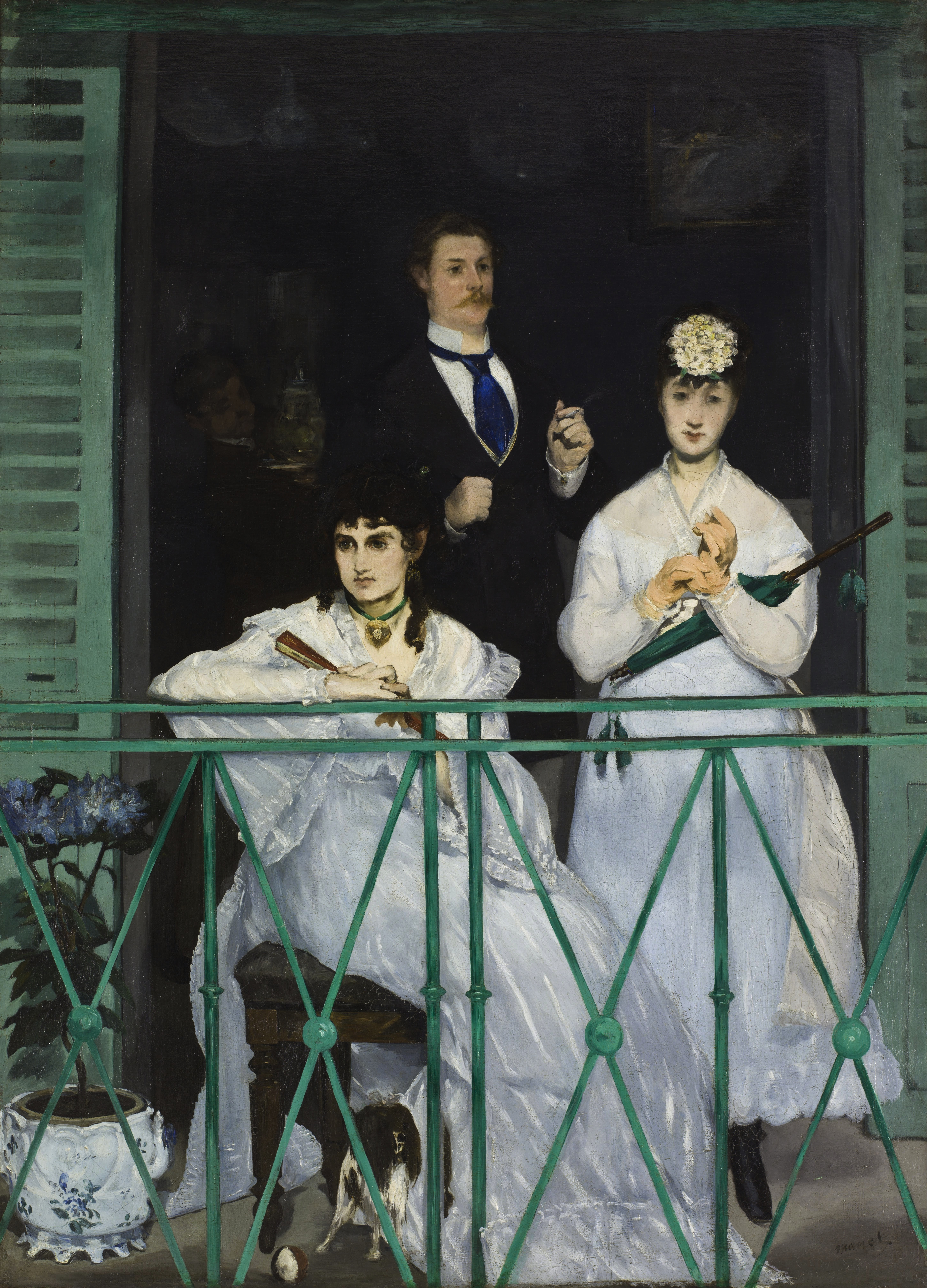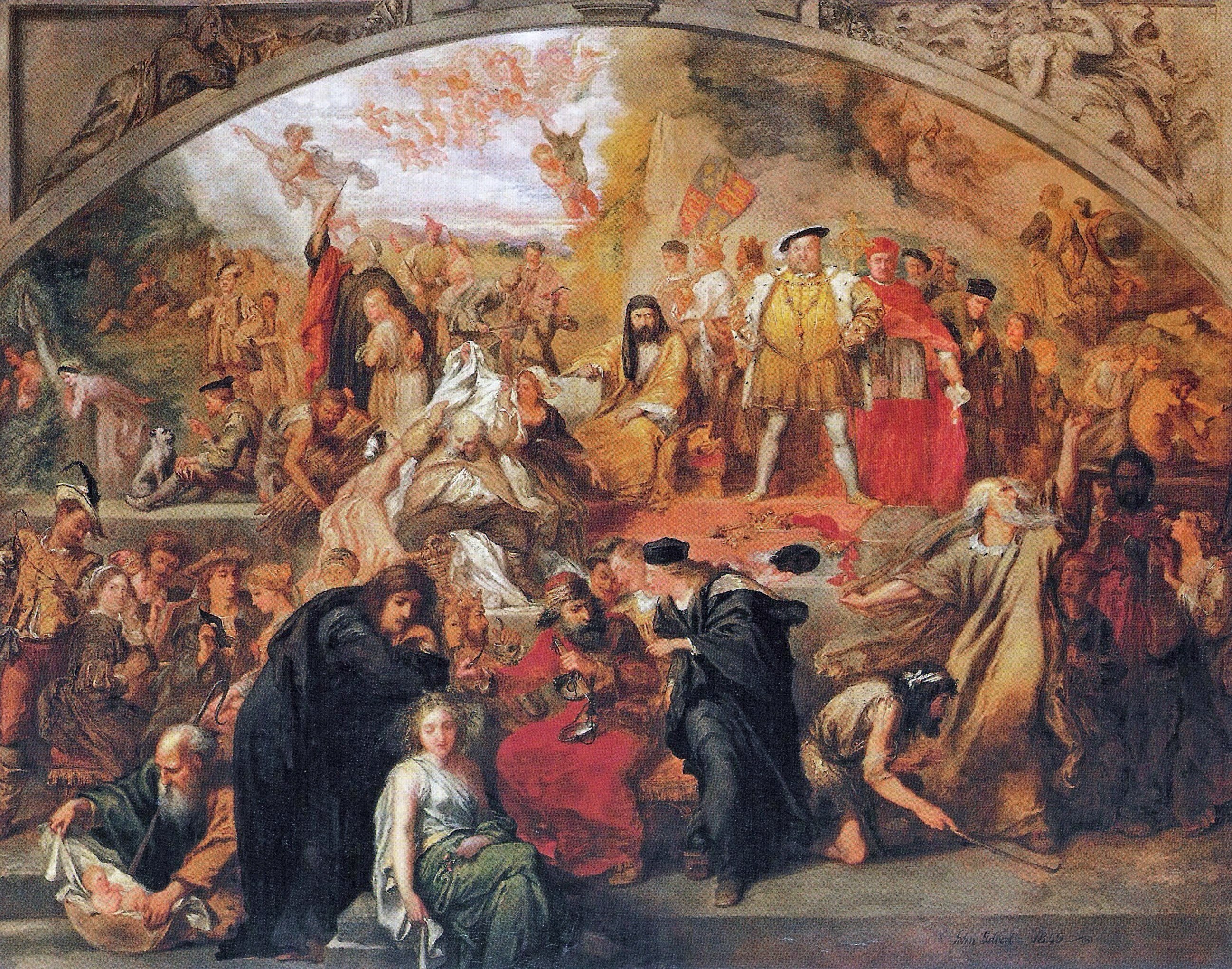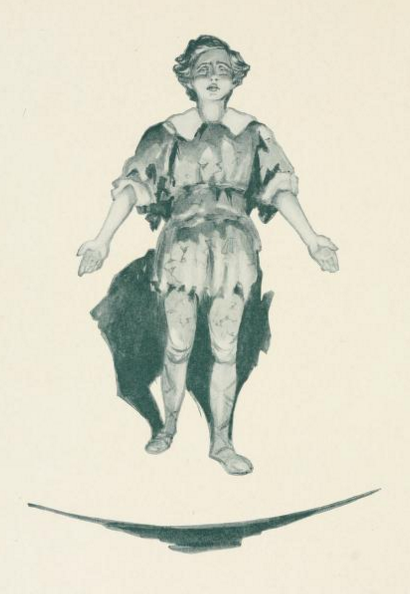|
Fourth Wall
The fourth wall is a performance convention in which an invisible, imaginary wall separates actors from the audience. While the audience can see through this ''wall'', the convention assumes the actors act as if they cannot. From the 16th century onward, the rise of illusionism in staging practices, which culminated in the realism and naturalism of the theatre of the 19th century, led to the development of the fourth wall concept. The metaphor suggests a relationship to the mise-en-scène behind a proscenium arch. When a scene is set indoors and three of the walls of its room are presented onstage, in what is known as a box set, the fourth of them would run along the line (technically called the proscenium) dividing the room from the auditorium. The ''fourth wall'', though, is a theatrical convention, rather than of set design. The actors ignore the audience, focus their attention exclusively on the dramatic world, and remain absorbed in its fiction, in a state that ... [...More Info...] [...Related Items...] OR: [Wikipedia] [Google] [Baidu] |
Metareference
Meta-reference is a special type of self-reference that can occur in all media or media artifacts, for instance literature, film, painting, TV series, comic strips, or video games. It includes all references to, or comments on, a specific medium, medial artifact, or the media in general. These references and comments originate from a logically higher level (a "meta-level") within any given artifact, and draw attention to—or invite reflection about—media-related issues (e.g. the production, performance, or reception) of said artifact, specific other artifacts (as in parody), or to parts, or the entirety, of the medial system. It is, therefore, the recipient's awareness of an artifact's medial quality that distinguishes meta-reference from more general forms of self-reference. Thus, meta-reference triggers media-awareness within the recipient, who, in turn "becomes conscious of both the medial (or "fictional" in the sense of artificial and, sometimes in addition, "invented") statu ... [...More Info...] [...Related Items...] OR: [Wikipedia] [Google] [Baidu] |
Video Game
Video games, also known as computer games, are electronic games that involves interaction with a user interface or input device such as a joystick, controller, keyboard, or motion sensing device to generate visual feedback. This feedback mostly commonly is shown on a video display device, such as a TV set, monitor, touchscreen, or virtual reality headset. Some computer games do not always depend on a graphics display, for example text adventure games and computer chess can be played through teletype printers. Video games are often augmented with audio feedback delivered through speakers or headphones, and sometimes with other types of feedback, including haptic technology. Video games are defined based on their platform, which include arcade video games, console games, and personal computer (PC) games. More recently, the industry has expanded onto mobile gaming through smartphones and tablet computers, virtual and augmented reality systems, and remote c ... [...More Info...] [...Related Items...] OR: [Wikipedia] [Google] [Baidu] |
Shakespeare's Plays
Shakespeare's plays are a canon of approximately 39 dramatic works written by English poet, playwright, and actor William Shakespeare. The exact number of plays—as well as their classifications as tragedy, history, comedy, or otherwise—is a matter of scholarly debate. Shakespeare's plays are widely regarded as being among the greatest in the English language and are continually performed around the world. The plays have been translated into every major living language. Many of his plays appeared in print as a series of quartos, but approximately half of them remained unpublished until 1623, when the posthumous First Folio was published. The traditional division of his plays into tragedies, comedies, and histories follows the categories used in the First Folio. However, modern criticism has labeled some of these plays " problem plays" that elude easy categorisation, or perhaps purposely break generic conventions, and has introduced the term romances for what scholars beli ... [...More Info...] [...Related Items...] OR: [Wikipedia] [Google] [Baidu] |
Tinker Bell
Tinker Bell is a fictional character from J. M. Barrie's 1904 play '' Peter Pan'' and its 1911 novelisation ''Peter and Wendy''. She has appeared in a variety of film and television adaptations of the Peter Pan stories, in particular the 1953 animated Walt Disney picture '' Peter Pan''. She also appears in the official 2006 sequel ''Peter Pan in Scarlet'' by Geraldine McCaughrean commissioned by Great Ormond Street Hospital as well as the "Peter and the Starcatchers" book series by Ridley Pearson and Dave Barry. At first only a supporting character described by her creator as "a common fairy", her animated incarnation was a hit and has since become a widely recognized unofficial mascot of The Walt Disney Company, next to the Walt Disney company's official mascot Mickey Mouse, and the centrepiece of its '' Disney Fairies'' media franchise including the direct-to-DVD film series '' Tinker Bell'' and Walt Disney's ''Wonderful World of Color''. In original play and novel Barrie ... [...More Info...] [...Related Items...] OR: [Wikipedia] [Google] [Baidu] |
Peter Pan
Peter Pan is a fictional character created by Scottish novelist and playwright J. M. Barrie. A free-spirited and mischievous young boy who can fly and never grows up, Peter Pan spends his never-ending childhood having adventures on the mythical island of Neverland as the leader of the Lost Boys, interacting with fairies, pirates, mermaids, Native Americans, and occasionally ordinary children from the world outside Neverland. Peter Pan has become a cultural icon symbolizing youthful innocence and escapism. In addition to two distinct works by Barrie, ''The Little White Bird'' (1902, with chapters 13–18 published in ''Peter Pan in Kensington Gardens'' in 1906), and the West End stage play ''Peter Pan; or, the Boy Who Wouldn't Grow Up'' (1904, which expanded into the 1911 novel ''Peter and Wendy''), the character has been featured in a variety of media and merchandise, both adapting and expanding on Barrie's works. These include the 1924 silent film, 1953 Disney animated ... [...More Info...] [...Related Items...] OR: [Wikipedia] [Google] [Baidu] |
Pantomime
Pantomime (; informally panto) is a type of musical comedy stage production designed for family entertainment. It was developed in England and is performed throughout the United Kingdom, Ireland and (to a lesser extent) in other English-speaking countries, especially during the Christmas and New Year season. Modern pantomime includes songs, gags, slapstick comedy and dancing. It employs gender-crossing actors and combines topical humour with a story more or less based on a well-known fairy tale, fable or folk tale.Reid-Walsh, Jacqueline. "Pantomime", ''The Oxford Encyclopedia of Children's Literature'', Jack Zipes (ed.), Oxford University Press (2006), Pantomime is a participatory form of theatre, in which the audience is encouraged and expected to sing along with certain parts of the music and shout out phrases to the performers. Pantomime has a long theatrical history in Western culture dating back to the era of classical theatre. It developed partly from the 16th century ... [...More Info...] [...Related Items...] OR: [Wikipedia] [Google] [Baidu] |
Realism (theatre)
Realism in the theatre was a general movement that began in 19th-century theatre, around the 1870s, and remained present through much of the 20th century. It developed a set of dramatic and theatrical conventions with the aim of bringing a greater fidelity of real life to texts and performances. These conventions occur in the text, (set, costume, sound, and lighting) design, performance style, and narrative structure. They include recreating on stage a facsimile of real life except missing a fourth wall (on proscenium arch stages). Characters speak in naturalistic, authentic dialogue without verse or poetic stylings, and acting is meant to emulate human behaviour in real life. Narratives typically are psychologically driven, and include day-to-day, ordinary scenarios. Narrative action moves forward in time, and supernatural presences (gods, ghosts, fantastic phenomena) do not occur. Sound and music are diegetic only. Part of a broader artistic movement, it includes Naturalism an ... [...More Info...] [...Related Items...] OR: [Wikipedia] [Google] [Baidu] |
Soliloquy
A soliloquy (, from Latin ''solo'' "to oneself" + ''loquor'' "I talk", plural ''soliloquies'') is a monologue addressed to oneself, thoughts spoken out loud without addressing another. Soliloquies are used as a device in drama to let a character make their thoughts known to the audience, address it directly or take it into their confidence. But sometimes that confidence may be partial--when characters share only part of their thoughts to the audience. English Renaissance theatre, English Renaissance drama used soliloquies to great effect, such as in the soliloquy "To be, or not to be", the centerpiece of William Shakespeare, Shakespeare's ''Hamlet''. See also *Aside *Backstory *Exposition (narrative) *Internal monologue *List of narrative techniques *Narration References [...More Info...] [...Related Items...] OR: [Wikipedia] [Google] [Baidu] |
Aside
An aside is a dramatic device in which a character speaks to the audience. By convention, the audience is to realize that the character's speech is unheard by the other characters on stage. It may be addressed to the audience expressly (in character or out) or represent an unspoken thought. An aside is usually a brief comment, rather than a speech, such as a monologue or soliloquy. Unlike a public announcement, it occurs within the context of the play. An aside is, by convention, a true statement of a character's thought; a character may be mistaken in an aside, but may not be dishonest. Examples This technique is used by many playwrights, including William Shakespeare. For instance, in the play ''Macbeth'', Macbeth has the following aside: Another example is found in ''Hamlet'': This technique has frequently been used in film comedy, for example in the Bob Hope "Road" comedies, Woody Allen comedies and in '' Ferris Bueller's Day Off''. The Jean-Luc Godard film '' Breathless ... [...More Info...] [...Related Items...] OR: [Wikipedia] [Google] [Baidu] |
The New York Times
''The New York Times'' (''the Times'', ''NYT'', or the Gray Lady) is a daily newspaper based in New York City with a worldwide readership reported in 2020 to comprise a declining 840,000 paid print subscribers, and a growing 6 million paid digital media, digital subscribers. It also is a producer of popular podcasts such as ''The Daily (podcast), The Daily''. Founded in 1851 by Henry Jarvis Raymond and George Jones (publisher), George Jones, it was initially published by Raymond, Jones & Company. The ''Times'' has won List of Pulitzer Prizes awarded to The New York Times, 132 Pulitzer Prizes, the most of any newspaper, and has long been regarded as a national "newspaper of record". For print it is ranked List of newspapers by circulation, 18th in the world by circulation and List of newspapers in the United States, 3rd in the U.S. The paper is owned by the New York Times Company, which is Public company, publicly traded. It has been governed by the Sulzberger family since 189 ... [...More Info...] [...Related Items...] OR: [Wikipedia] [Google] [Baidu] |
Vincent Canby
Vincent Canby (July 27, 1924 – October 15, 2000) was an American film and theatre critic who served as the chief film critic for ''The New York Times'' from 1969 until the early 1990s, then its chief theatre critic from 1994 until his death in 2000. He reviewed more than one thousand films during his tenure there. Early life Canby was born in Chicago, the son of Katharine Anne (née Vincent) and Lloyd Canby. He attended boarding school in Christchurch, Virginia, with novelist William Styron, and the two became friends. He introduced Styron to the works of E.B. White and Ernest Hemingway; the pair hitchhiked to Richmond to buy '' For Whom the Bell Tolls''. He became an ensign in the United States Navy Reserve on October 13, 1942, and reported aboard the Landing Ship, Tank 679 on July 15, 1944. He was promoted to lieutenant (junior grade) on January 1, 1946, while on LST 679 sailing near Japan. After the war, he attended Dartmouth College, but did not graduate. Career He obt ... [...More Info...] [...Related Items...] OR: [Wikipedia] [Google] [Baidu] |
Suspension Of Disbelief
Suspension of disbelief, sometimes called willing suspension of disbelief, is the avoidance of critical thinking or logic in examining something unreal or impossible in reality, such as a work of speculative fiction, in order to believe it for the sake of enjoyment. Aristotle first explored the idea of the concept in its relation to the principles of theater; the audience ignores the unreality of fiction in order to experience catharsis. Origin The poet and aesthetic philosopher Samuel Taylor Coleridge introduced the English-language term "suspension of disbelief" in 1817 and suggested that if a writer could infuse a "human interest and a semblance of truth" into a fantastic tale, the reader would suspend judgement concerning the implausibility of the narrative. Coleridge sought to revive the use of fantastic elements in poetry and developed a concept to support how a modern, enlightened audience might continue to enjoy such types of literature. The term resulted from a philos ... [...More Info...] [...Related Items...] OR: [Wikipedia] [Google] [Baidu] |








.png)